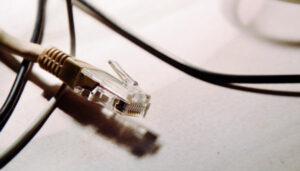Wireless display solutions are now fighting against the same misconceptions that wireless internet had to overcome a decade ago.

Both wireless displays and wireless internet were traditionally billed as ways to simply ‘cut the cord’ and do away with unmanageable tangles of cables and piles of adapters. The more ambitious advertisers would point out that either solution allows the person connected to the internet or display to move freely about a room, unhindered by physical wires. Yet, these taglines marginalize both technologies as they not only transcend the video or ethernet cable, but can transform a one-to-one relationship into a shared solution. Before WiFi, the number of devices that could be connected to a particular wired internet connection was entirely dependent on user hardware. Splitters could be purchased and long cables could be routed to multiple devices in a facility, but each cable effectively has one beginning and one end. Allowing a new device to connect to the internet required someone to unplug an ethernet cord from one device and plug it into the new one. Wired internet was very much a one-to-one relationship.

Adapters and dongles were purchased, with an ethernet cable kept close at hand just in case, and users would politely disconnect one computer from the network to ‘free up’ that connection spot if someone else wanted to use the internet. Early adopters maintained the concept of a one-to-one relationship, even though we understand now that WiFi is capable of so much more.
Today, we use WiFi the way it was intended and push the boundaries on speed and functionality. We walk into a space, whether a public coffee shop or a friend’s home, and expect to be able to connect to the internet by network name regardless of other devices currently on the network. We attach dozens of ‘smart’ endpoints and devices to the same network to exploit device-to-device communication and use that network to send and receive data from the cloud, so that turning off a light is never more effort than touching a button on a phone screen, whether you’re at home or across the globe.

Today, wireless displays face the same challenge. Until recently, display ‘technology’ was a video cable allowing only a single person to connect at a time. HDMI became very popular because it could transmit video and audio data through the same cable, and it further engrained the one-to-one computer-to-display relationship. To swap presenters in a meeting, for example, the first presenter had to unplug and physically pass the video cable to the second.
With increasing WiFi speeds and device processing power, wireless display connectivity was born and since the market has been flooded with dongles and adapters that tout the ability to form a wireless link between a computer and a display. These devices claim to do the same thing as an HDMI cable – streaming a user’s screen onto a different display – wirelessly. While this does remove the cable from the equation, these solutions maintain the highly restrictive, artificial one-to-one relationship between users and the display. A dongle must still be physically moved to swap presenters or presentation permission must still be granted.
Just as you now know to expect more from your wireless internet solution, it is time to demand so much more than a simple ‘cord cutting’ answer from your wireless collaboration solution.

Simply cutting the cord and installing adapters misses the real purpose and value of a wireless display – to allow multiple users to connect and share information freely in real time, with no hardware or permission changes required. Removing the video cable from the meeting rooms opens up new opportunities for better collaboration and more effective, engaging, and time-efficient meetings. If a site manager has relevant images on his phone, he should be able to share those instantly, without having to email them to a computer or sift through an online directory. A good solution will allow users to connect wirelessly, but a great solution is flexible and secure enough to be deployed right on your enterprise network(s), so any employee, student, or guest may walk into any space and connect to the display without switching networks.
Wireless displays are poised to revolutionize the way we use display technology in the workplace, in public spaces, and even at home. The technology has already evolved past one-to-one relationships and dongles – products like Solstice allow you to connect to a display as easily as connecting to a WiFi network. These products facilitate new ways of engaging and collaborating whenever and wherever you come together with others. Although there is a natural human reluctance to change, applying lessons learned from the evolution of WiFi to wireless display technology reveals the opportunity that lies beyond just cutting the cord. Given the chance decades ago, wouldn’t you have gone straight from wired internet to ubiquitous WiFi in its current form and skipped the awkward intermediaries?
